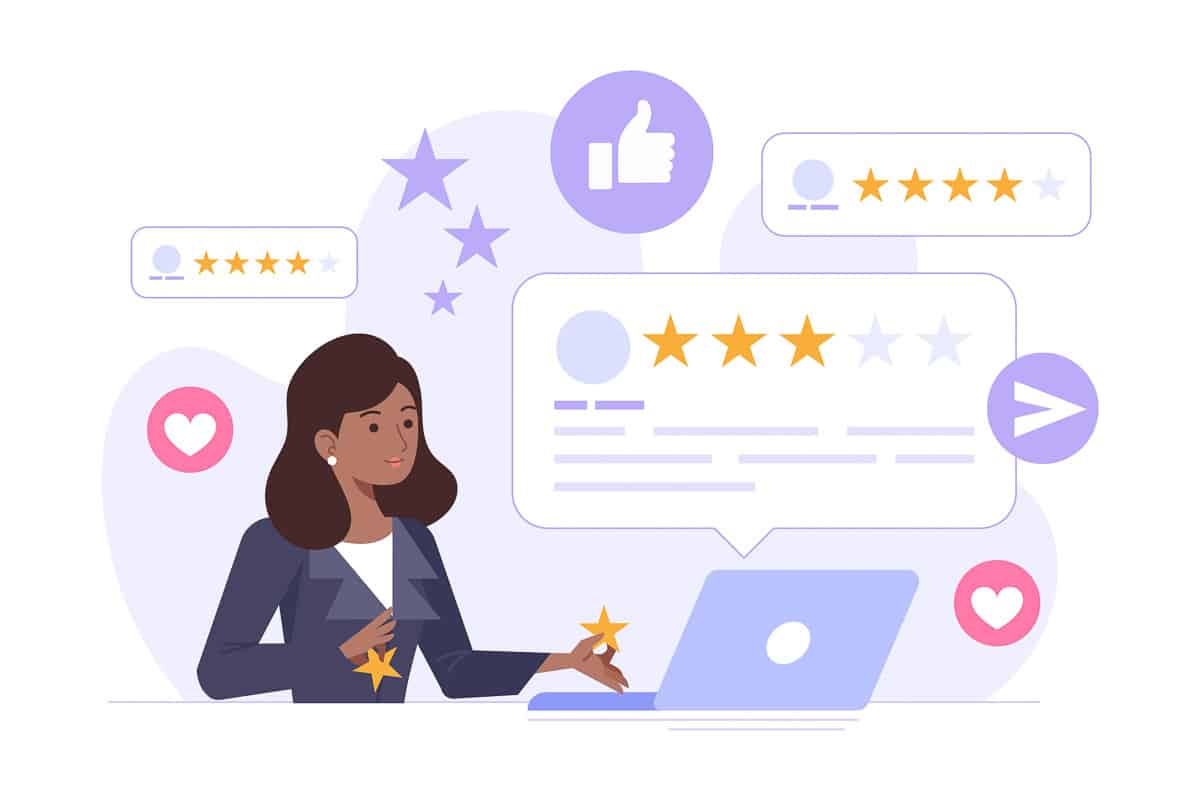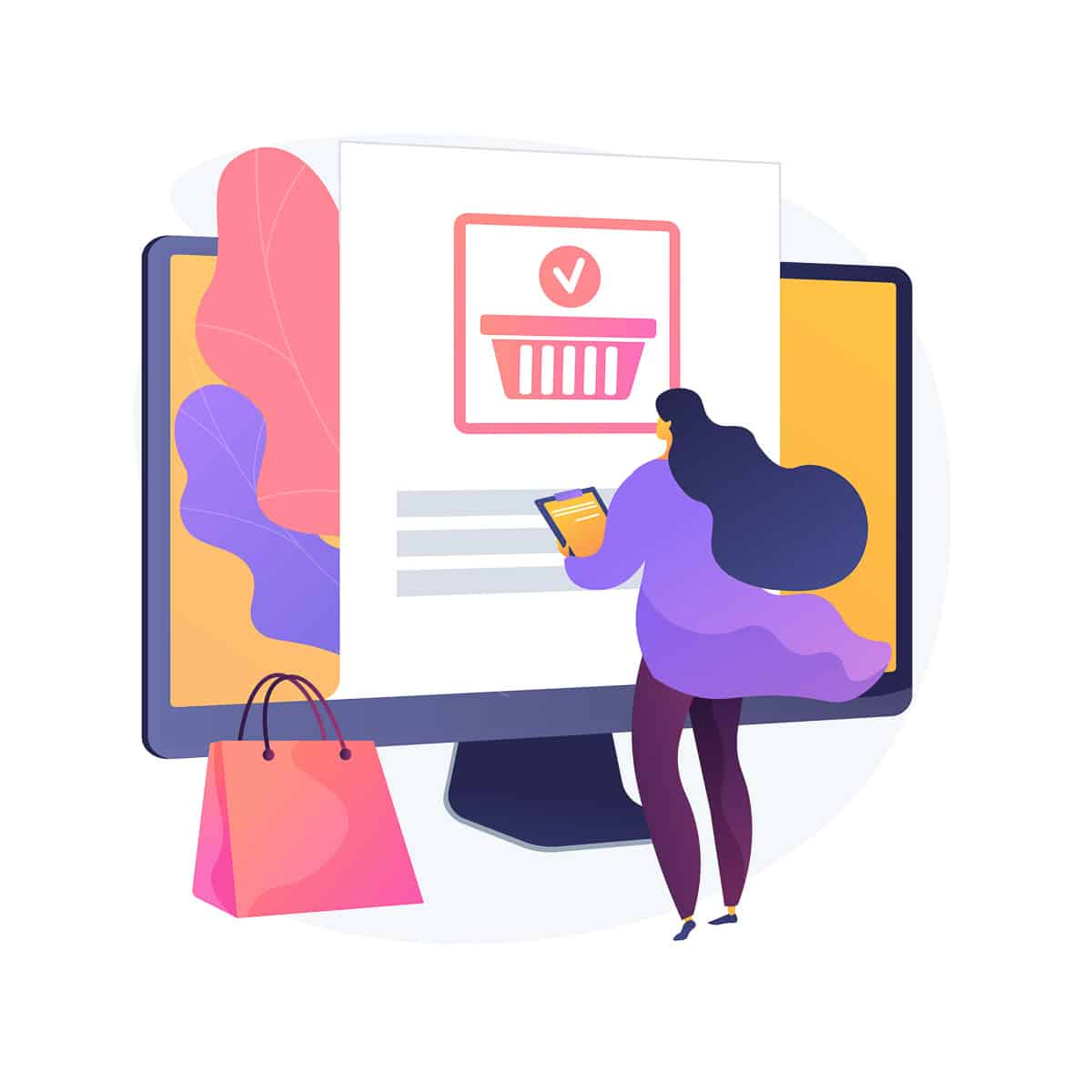In recent years, consumers have been turning more and more to online shopping. This is great news for eCommerce businesses as it makes it easier to find potential customers through advertising and creating an engaging online brand.
However, it also means that the competition has increased.
So, how do businesses stand out from the crowd to attract new customers and retain existing ones? One decisive factor for many consumers is their unique experience with each business. And in this article, I’ll address five crucial strategies you can implement into your eCommerce business model for immediate results.
Let’s dive in!
5 strategies to improve customer experience
Customer experience refers to anything that happens during the many stages of the sales cycle. This includes everything from how customers feel when browsing the website to their interactions with sales representatives.
Because of this, you need to integrate efficient strategies into your eCommerce business model to improve your customer experience.

It may sound obvious, but the best place to go for advice on improving the customer experience is the customer!
If you already allow customers to leave a review of your business, review both positive and negative feedback. Make a note of what your team is doing well – and continue doing it!
Then identify areas customers say you could improve on. Take constructive feedback to the drawing board and make it a priority for your team to find a solution.
Reviews aren’t the only opportunity for customers to provide feedback. If your business has an Instagram, Twitter, or Facebook account, check out the replies and comments you get from your followers.
Consumers love to vent publicly about negative experiences to warn others. If somebody leaves a negative comment on your social media posts or profile, respond politely and professionally to get to the root of their dissatisfaction. This will help you improve your customer experience and show others that you take feedback seriously.
Short surveys are another great way of encouraging customers to tell you how they feel about the customer experience. Surveys can be presented to customers in several ways.
You could set up your website so that a mini-survey is triggered when somebody tries to leave the site. This could ask questions such as why they are leaving and how they found their experience on that day.
Asking them to rate their customer experience out of five stars is a valuable way to get a response from somebody who is in a hurry and not interested in writing out answers.
Got someone’s email? Take advantage of that! Send them marketing emails with rewards. For example, if they complete a survey for you, they get 10% off their next purchase or free delivery.
If your eCommerce business has an app, send a push notification linking them to the survey. Mobile users are often more likely to open these than an email.

What is one of the biggest pulls of online shopping? Not queuing!
It’s common knowledge that a slow-loading website puts visitors off. So, every second it takes for your store’s webpage to load decreases your chances of a consumer making a purchase—literally, every second.
The good news is it’s pretty straightforward to decrease your page loading time. Test your website’s speed using a tool such as WebPageTest. The results will highlight specific issues that are causing your website’s performance to be hindered.
One major problem that causes increased loading times on websites is unnecessarily large images. Using high-resolution images when they aren’t needed will add to your page’s loading time and might end up being the reason someone gives up on your site.
Scale down your images, especially if they aren’t completely necessary (i.e. if they aren’t images of a product you are selling).
Unfortunately, you may have to consider upgrading your hosting server.
If you initially opted for a cheaper hosting provider when you started your small business, you may find that as your business grows, so do your website’s traffic and your customers’ expectations. Although it costs more, upgrading to a more efficient hosting provider will help you in the long run and keep your site’s loading time down.

Put yourself in the customer’s shoes. Considering all the times you have purchased a product online, what was your customer journey? What does the lead time in the supply chain look like? Did you simply open the online store site, add a product to the basket, and purchase it? Probably not!
When customers make online purchases, it is often a complex process that begins in one virtual or physical place and ends in another. This is why you must maintain an effective omnichannel customer experience.
Omnichannel customer service refers to strategies that businesses develop to ensure the customer experience flows from one channel to another. For example, a conversation a customer has with a representative on a business’s social media profile should reflect a conversation they would have with the business’ sales agent on the telephone or website.
You might feel inclined to invest in chatbots for your website and social media messages. After all, this will surely save your staff time and help to reduce repetitive tasks such as answering frequently asked questions, right?
While chatbots can be an excellent way of improving the customer experience, many customers like to feel they are interacting with a human before completing a purchase or giving their money over to a business.
Because of this, it is crucial you make it simple and easy for consumers to talk to your team over the phone. This is particularly important if you are a small business, as new customers might be unsure of your reliability and authenticity.
Your small business phone will be one of the most important investments you make in your business. It could even be the tool that gives you an advantage over your online competitors.
The right phone can provide you with security, call encryption, cloud computing compatibility, and easy call forwarding and redirecting. All of these features make your business safer and your customer experience more efficient.
Another excellent way of maintaining an omnichannel customer experience is by ensuring your site saves the items in someone’s basket even when they switch devices.
Modern society is full of hybrid environments, and this includes our shopping habits. A customer might add a product to their basket on their mobile phone while commuting to work but want to check out on their laptop during their lunch break.
Keeping their basket stored saves the customer time and delivers a smooth and efficient online shopping experience. What’s more, it’s likely to improve their opinion of your business as they will appreciate the smooth transaction.

Most websites today collect cookies. But there is no point in collecting customer data if you aren’t going to use it to your and the customer’s advantage.
In this day and age, customer data is invaluable in your efforts to deliver personalized marketing. But this method is about more than just using the customer’s name (but make sure you do that too!).
Once you have collected data on the types of products a particular customer is interested in based on previous purchases or search history, you can suggest similar products to them after running the data through your automated inventory management software. Try to cross-sell or up-sell when they visit the page for a particular product and recommend final items that are often bought together once they head to the checkout. This is the virtual equivalent of placing magazines and chocolate at the checkout line!
Personalizing the shopping experience for your customers shows you aren’t purely focused on making more sales. You are actually helping your customer by showing them other products they might not have found by themselves. It shows you are authentically connecting with your customers.
You can improve the customer experience even more by personalizing their experience based on time and location. Automate discount codes on their birthday to ensure your customers feel valued.
In addition, utilize their geographical location to send personalized marketing campaigns based on national holidays and traditions.
For example, Black Friday is an ever-expanding ‘tradition’ for eCommerce businesses. Each year, the discounted shopping event seems to be recognized in more countries.
So if you want to send out Black Friday marketing campaigns, be sure to check which parts of the world you sell in mark Black Friday.
Keep in mind different versions of languages as well, particularly when it comes to English and Spanish.
For example, if you’re an American-based business, but somebody browses your site in the UK, you may choose to show a version of your content written in British English, with prices in GBP. Such personalization avoids any confusion over different lexical choices and makes the experience more comfortable for the customer.
Another popular personalization method relates to customers that leave items in their baskets without making a purchase. An excellent way to overcome this is to send them a reminder through email or push notifications. Perhaps you can also ask whether they need help making a decision or completing the checkout.
Often, a customer may have become distracted while online shopping or saved items in their basket during a work break and have forgotten about them. Or perhaps they are deciding between buying your product and another business!
Your reminder message might be the final push they need to make the decision to buy your product or simply remind them of a purchase they hadn’t yet completed. Either way, these messages show that you value their custom and are on hand to help.

As the last step in online shopping, the checkout experience leaves a final impression on your customers.
By making this part of the process as easy as possible, you are ensuring customers end their eCommerce interaction with your business on a positive note and with a high opinion of your customer service.
While it may feel like you’ve secured their business by this stage, it’s not always the case! You must ensure that your checkout process is as smooth and efficient as possible.
After all, customers are likely to become frustrated if they are asked to input information such as shipping details more than once, the process has too many steps, or the page is too slow to load. Remember, many people opt for online shopping because it should be quicker than queueing at the shop.
To help make this process even more efficient, allow your checkout page to auto-fill a user’s contact information and card details. This is the most mundane part of any checkout process, especially if the user is buying from multiple sites in a short time frame (perhaps for a birthday or Christmas).
Many customers may also feel uncomfortable giving your website their card details for fear of fraud. Because of this, be sure to provide as many payment options as possible. Integrate services such as PayPal, ApplePay, and GooglePay, which are likely more trusted by customers due to their reputation.
If possible, have the checkout process limited to one page only. Even if this makes the page long, having everything a customer needs to complete the process in one place will make the checkout feel quicker and less overwhelming.
You might want to read next:
Conclusion
There are plenty of efficient strategies that can be integrated into your eCommerce business model to improve the customer experience, reduce customer churn, and boost your company’s reputation.
Making the most of customer feedback and taking action is integral to customer service. What’s more, it also helps to build a positive brand image as it shows a willingness to learn and improve.
In addition, ensuring your website delivers a smooth and efficient customer journey could be the difference between customers shopping with you or opting for a competitor.
Finally, simple actions such as investing in a small business VoIP phone system can lift your eCommerce customer experience above your competitors. It improves your omnichannel service by offering a smooth line of communication, showing you’re a trustworthy platform, and boosting efficiency in the workplace.
Providing a successful customer experience means your customers feel valued. In turn, they are likely to become repeat customers and help to bring in more business by sharing their positive experiences with family and friends.

